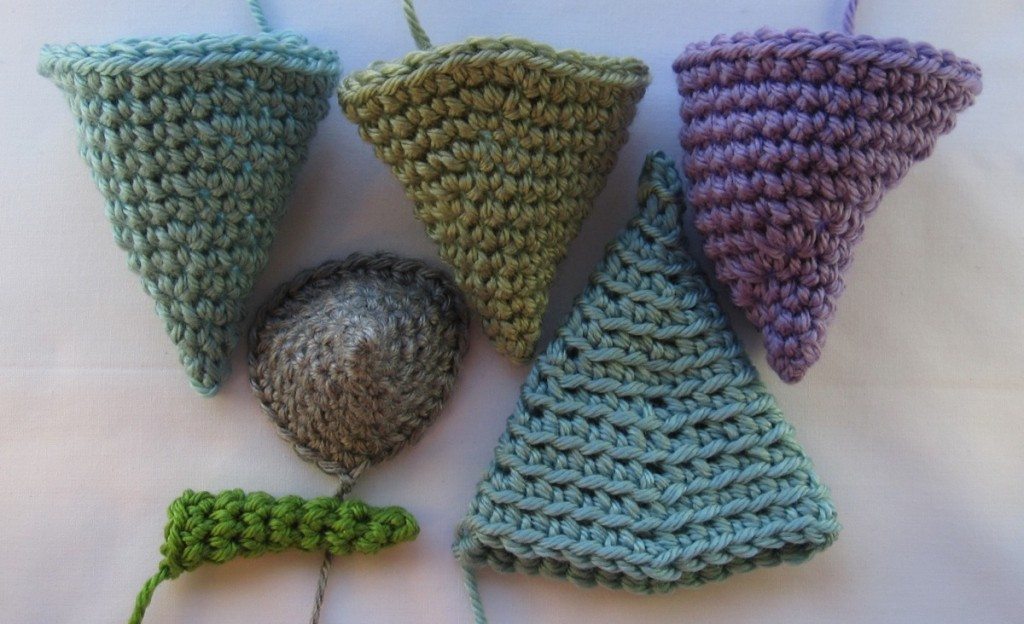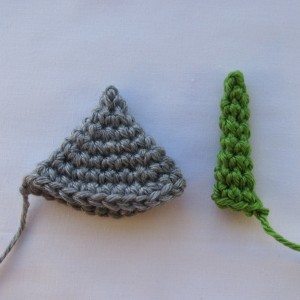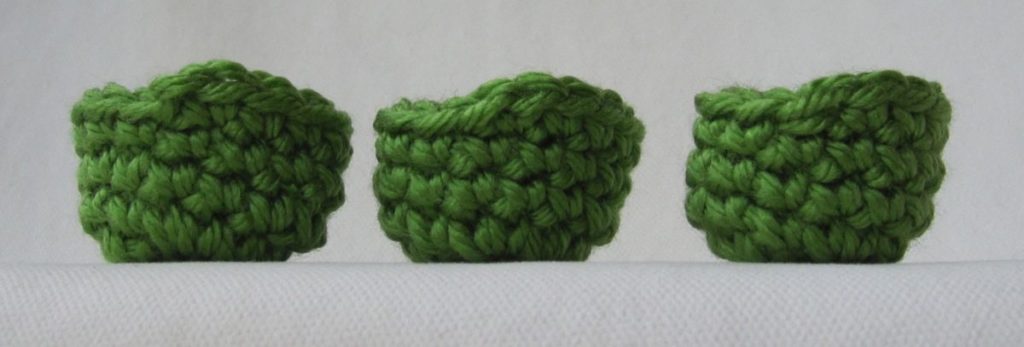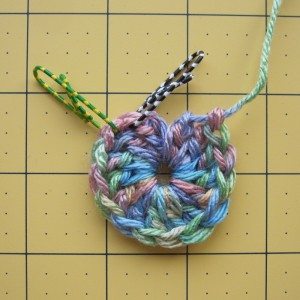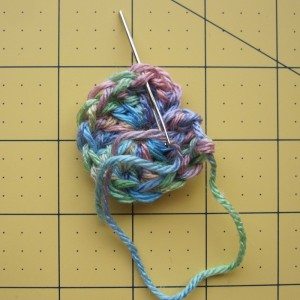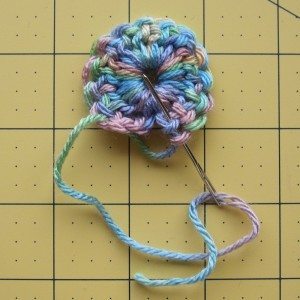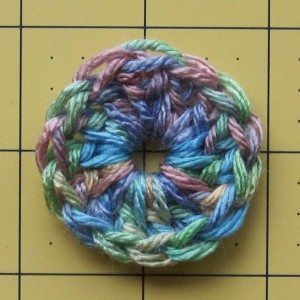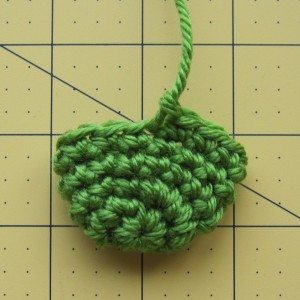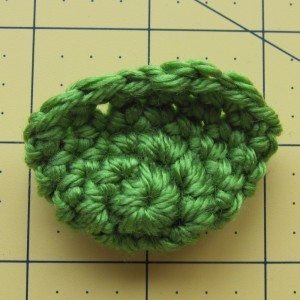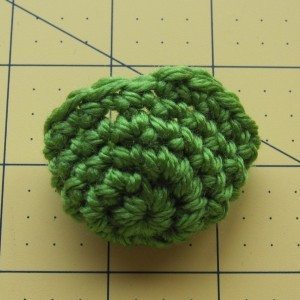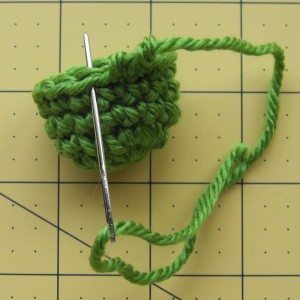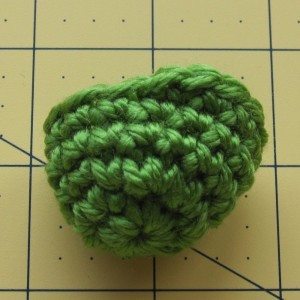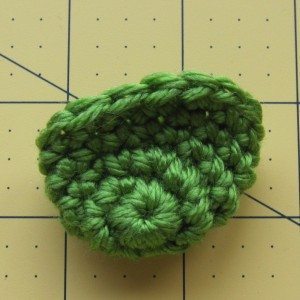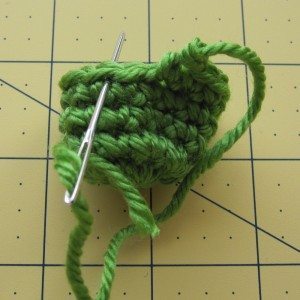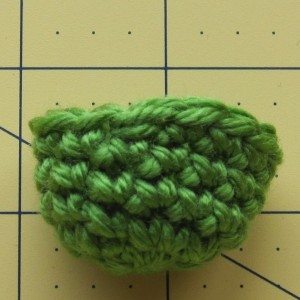I quite enjoy these explorations of crochet geometry, and I hope you do too – at least the photos. This episode is about crocheting cones, with a teaser photo for my next post at the bottom.
A cone is a basic shape and simple to crochet. The math of it is that the circumference and height of a cone have a linear relationship: for every cone there is a value x so that wherever you are on the cone, the circumference at that point is x times the height at that point. You can use trigonometry to work out stitch counts for cones of specific proportions (here’s a post sort of about that), but more simply it means you add the same number of stitches to each round. That is, at least, on average. You would get a cone by alternating adding 2 and 3 stitches to each round (effectively adding 2.5 per round), or adding 2 stitches to most rounds but only a single stitch to every fourth round (effectively adding 1.75 per round). The fact that increases and decreases in crochet don’t fully take effect until the round after they are made allows this to work smoothly.
By the time you get to seven stitches per round you’re pancake flat, and six is flat enough that it tends to come out as rounded instead of conical. You can get a good wide cone starting with five stitches in a magic ring and adding four stitches per round – even three will come out as fairly wide. For a very narrow cone, adding just one – or even less – is called for. The following cones were made by starting with 3 stitches in a magic ring and adding 3 more each round (gray cone, left side), and by starting with 3 stitches in a magic ring and alternating between adding one stitch and adding no stitches (starting with 1; green cone, right side). They each proceed for 8 rounds, so the gray cone ends with 24 stitches around and the green one with 7.
After the jump: placing increases, making a base, and stitching in back loops only. Continue reading On cones, shaping, and one-loop stitching
